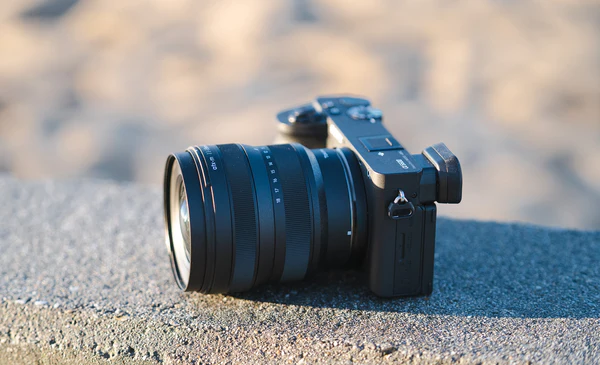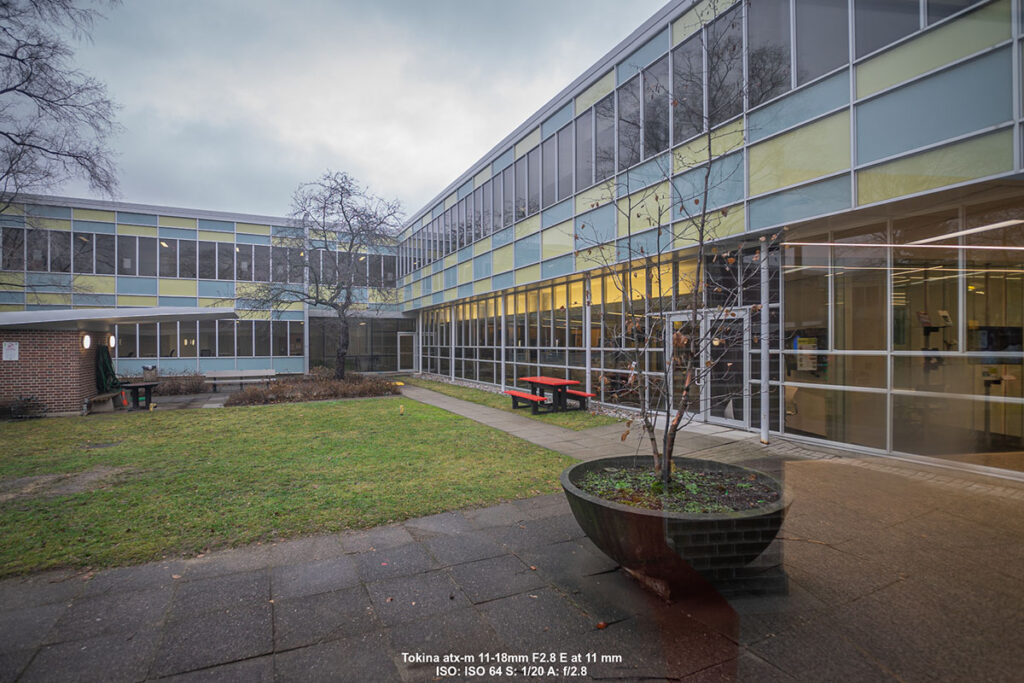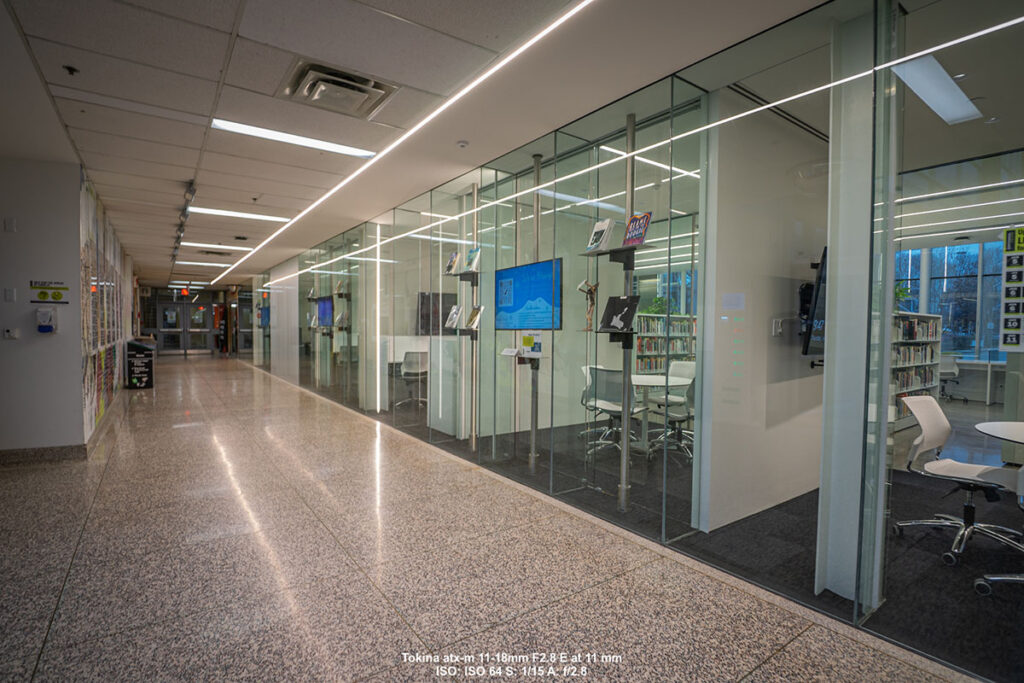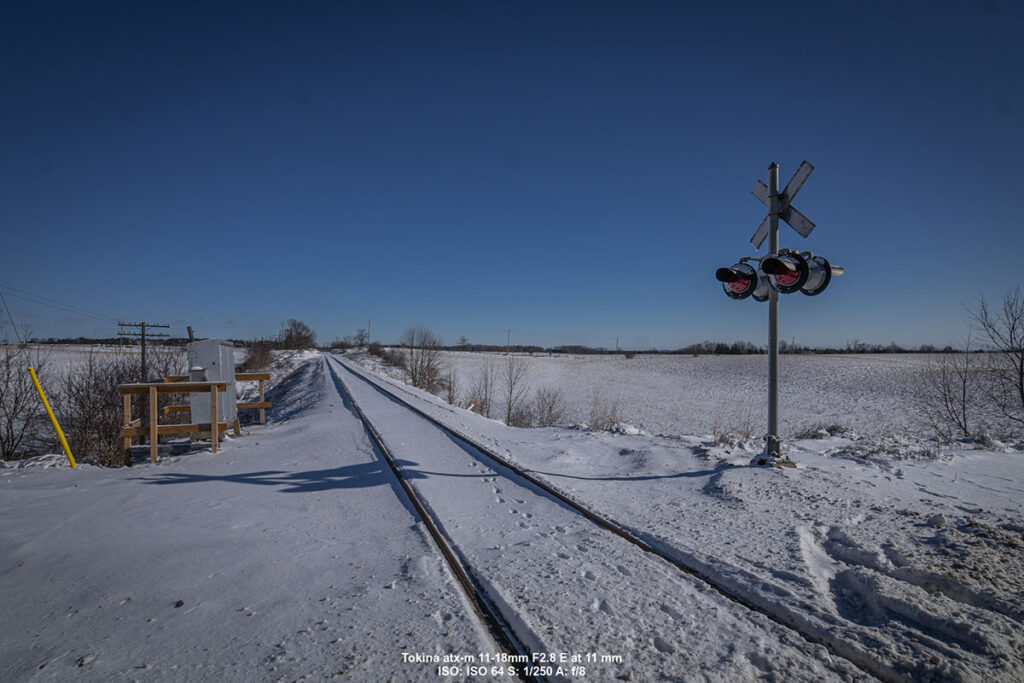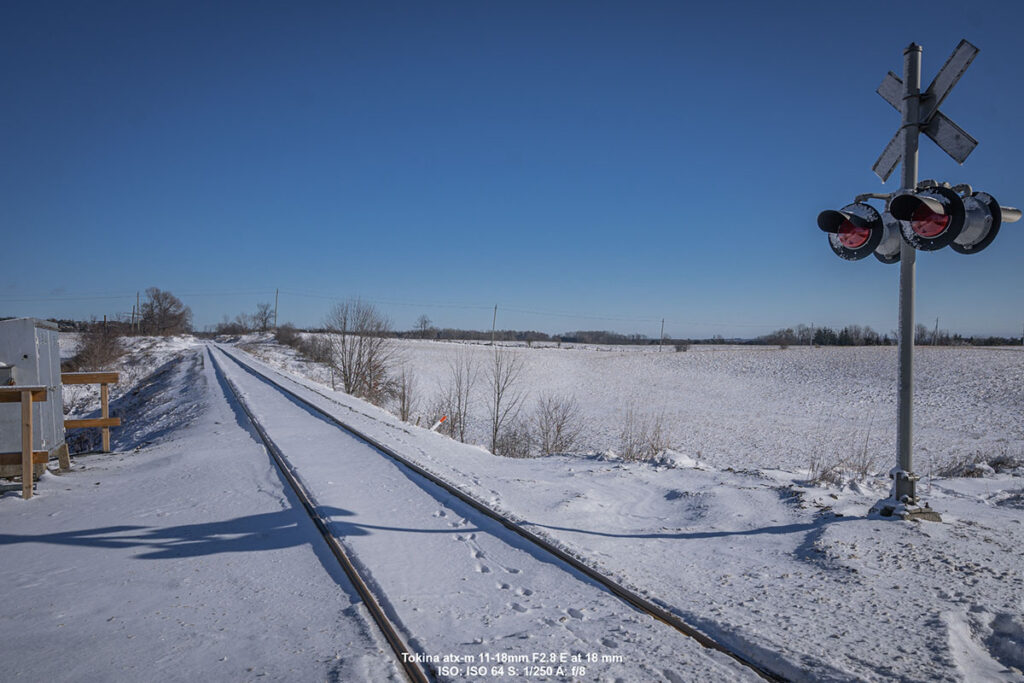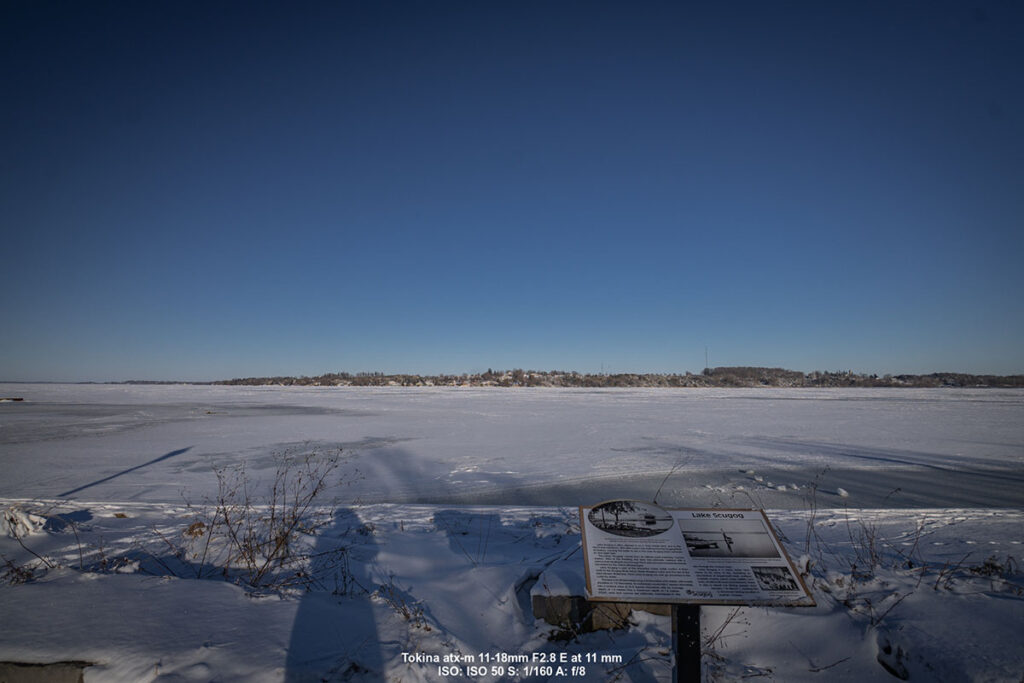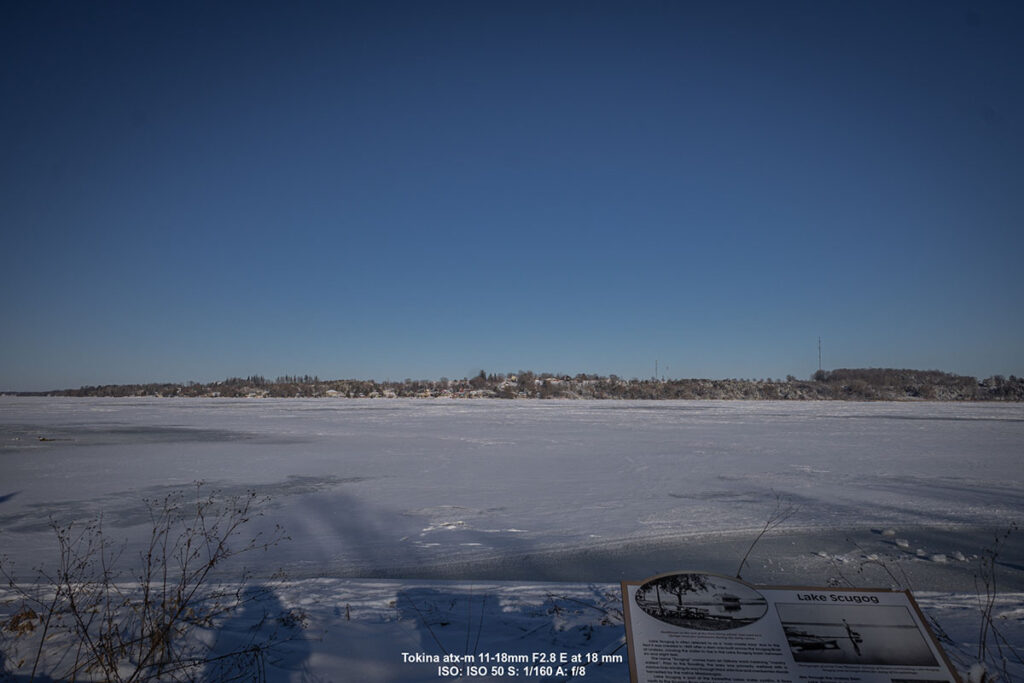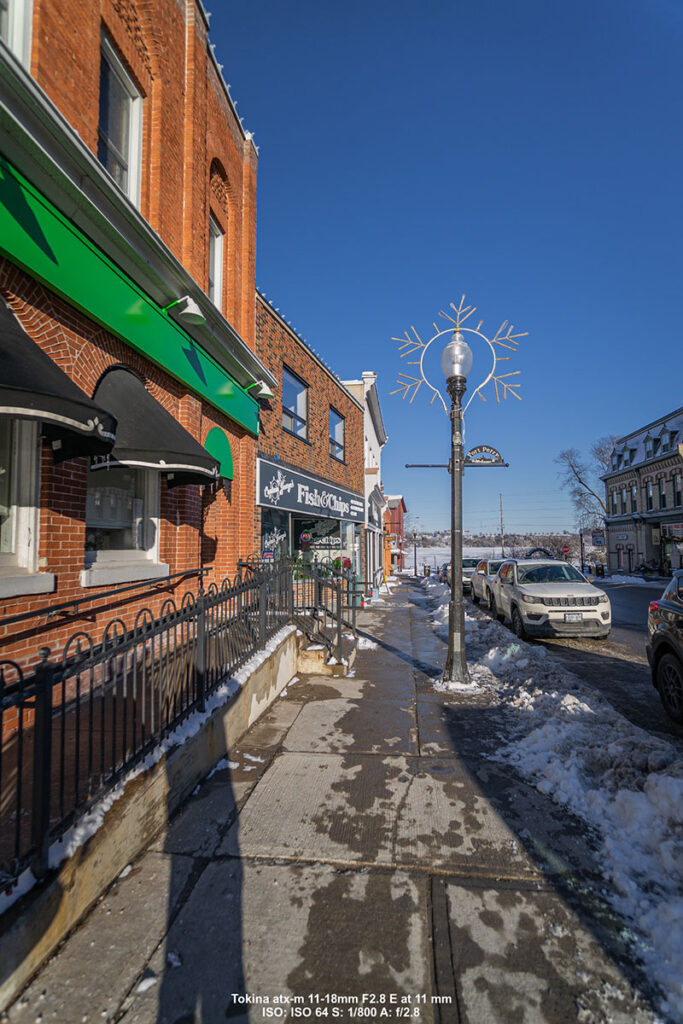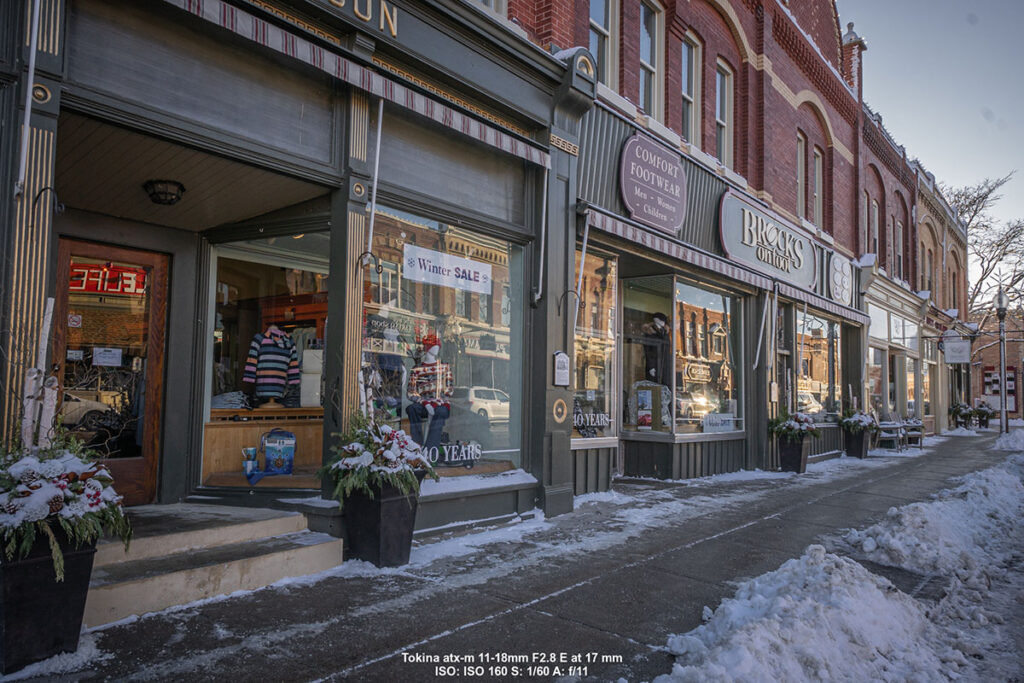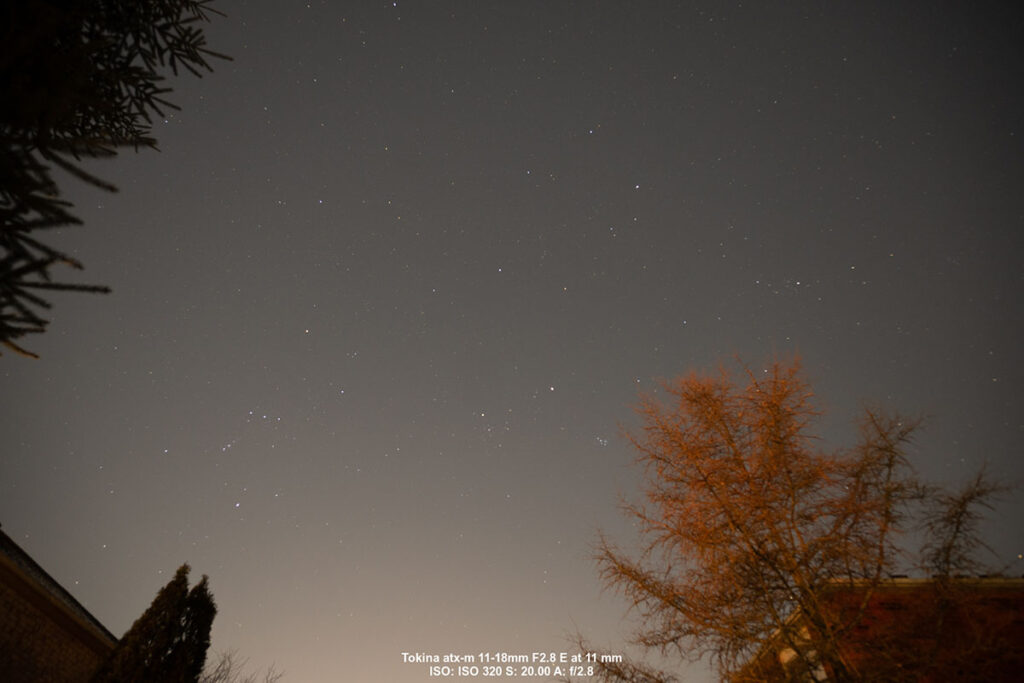Tokina is widely regarded for manufacturing some of the best ultra-wide lenses the past 15 years or so. Various versions of the ultrawide f/2.8 have been standouts – they’re bright, fast focusing and optically very good. Long before the Full Frame Mirrorless wars, the APS-C DSLR was king and landscape, real estate and street photographers clamored for the Tokina 11-16mm. The newest atx-m 11-18mm f/2.8 E is no different. This latest iteration is available in Sony E mount for their APS-C cameras. I tested it on my full frame Sony a7 in APS-C crop mode and it worked very well.

The first thing that caught my attention was the build quality. Tokina lenses have always felt robust but I was pleasantly surprised by this new lens. Reverse to what I’m accustomed, the zoom ring is closer to the camera and the focus ring near the front of the lens. On this lens, it makes more sense as I tend to focus more than zoom. A standout feature is the rings themselves – there are no rubber bands to stretch and slip off. The rings are finely ridged hard plastic (the same material as the rest of the lens) with very smooth damping. It felt so different but comforting at the same time. The matte black finish is tasteful and elegant. The included petal-shaped lens hood affixes with a very positive lock. This lens is NOT WEATHER SEALED. I did take it outdoors (it’s winter here and cold, without much snow), but I would not use this lens in the rain. The lens mount is all metal and connects soundly and firmly.
This lens only weighs 335g – exactly what you want from a mirrorless lens (remember when the big promise of mirrorless revolved around less weight in your camera bag??). At only 74mm long (107mm with the hood attached), the atx-m 11-18mm feels well balanced on my a7 and would not overwhelm an a6x00 camera.
The atx-m is an internal focus design; the lens barrel moves in and out whilst zooming. There are no switches or buttons on the lens – it’s clean! Working aperture is a constant f/2.8 throughout the focal range with a minimum aperture of f/22. The 11-18mm is 17-27mm in 35mm equivalent with 104°-77° angle of view. Minimum focus distance is 19cm/7.5” with maximum magnification of 1:9.2. It’s not a macro wide angle lens! Manual focus can be enabled on camera (thank you Sony for making that so difficult!!). There’s full electronic communication between lens and camera – autofocus, full EXIF data, In-Camera corrections and electronic aperture all work as expected. If your camera has IBIS (In Body Image Stabilization), it will work fine, as well.
*Nikon Z camera photographers can enjoy this lens by using the Megadap ETZ-21 Autofocus Adapter*
My favourite feature of this lens is the filter threads on the front. The atx-m 11-18mm accepts common 67mm filters, as do most other Sony lenses. This made it easy to attach my Kenko Circular Polarizer whilst testing this lens.
How does this lens perform?
The autofocus worked almost every time – the only time I couldn’t get AF to cooperate was late at night trying to shoot the stars. I blame the camera more than the lens. Manually focusing with gloves on was also a frustrating exercise – that’s all on Sony, however, I wish this lens had an MF/AF switch.
Images have very nice tones throughout, subject areas/focus points are sharp and detailed and the transitions from sharp to out of focus are creamy smooth. Since this lens is so light and small, I could handhold it down to 1/20s (no IBIS in this camera body).
Lens distortions are well controlled and are very minimal, even wide open. Lens profiles aren’t in Lightroom yet they should be available soon.
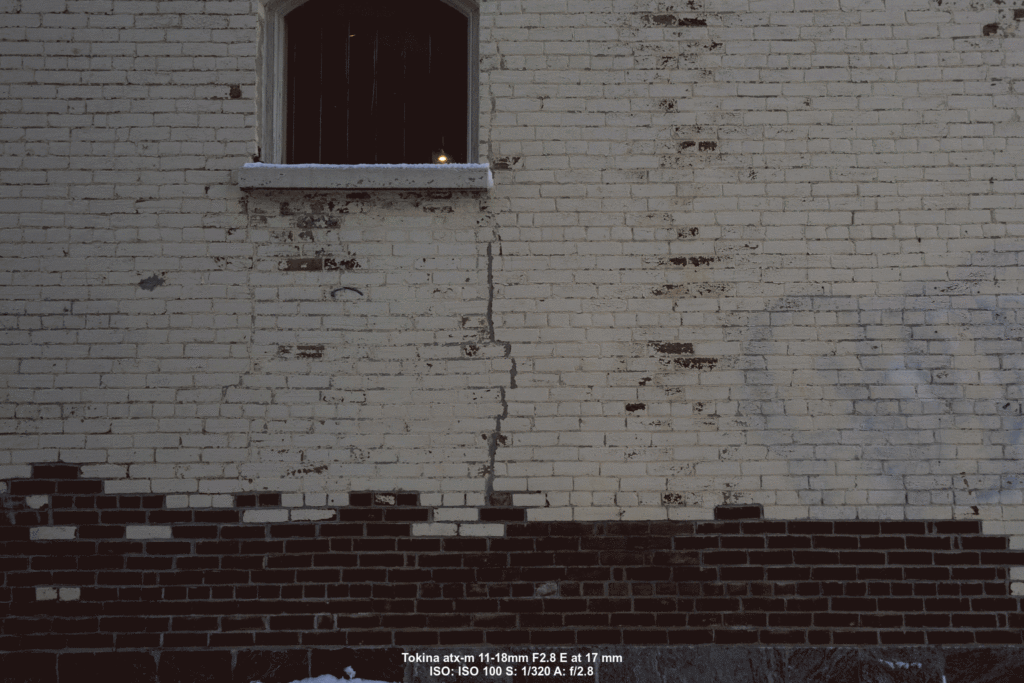
(Click to view larger image to see changes)
I also found vignetting to be minimal wide open and gone by f/4.
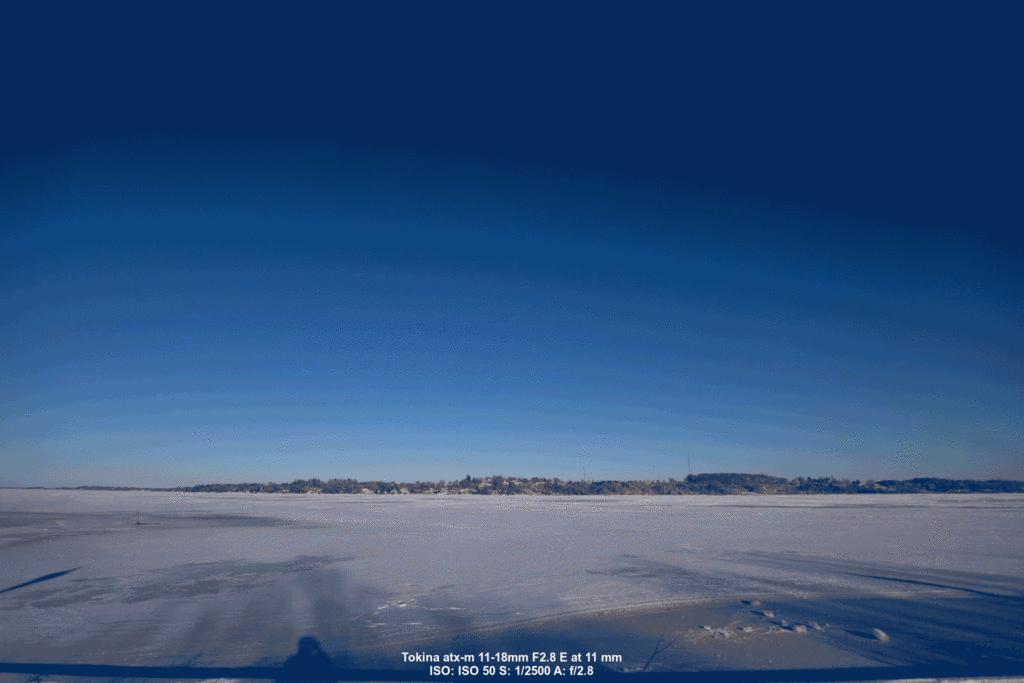
(Click to view larger image to see changes)
Chromatic aberrations were equally minimal and very easy to fix in camera or via Lightroom lens profiles.
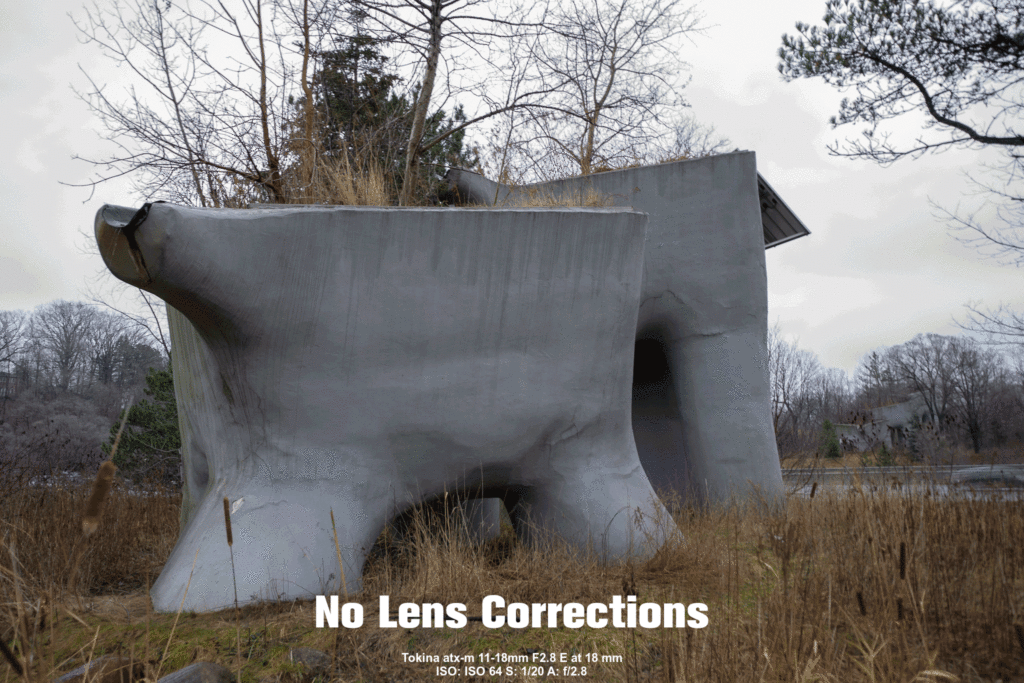
(Click to view larger image to see changes)
Thankfully, I had one clear and moonless evening to see how the atx-m handled stars and dark skies. Exposures at 20s, f/2.8, ISO320 are nicely detailed and coma is non-existent in about ¾ of the image. The corners displayed some coma but it wasn’t horrible (lens corrections cannot fix this).
As I have my Christmas lights still plugged in (and will until the end of this month), it was the perfect opportunity to view the “bokeh balls” on highlights. The more circular and complete the “bokeh ball”, the more pleasing the image. Note that the lights on the right, closest to me, aren’t circular so the bokeh can’t be round. No matter the focal length, bokeh is nice and round with a little compression on the outside.
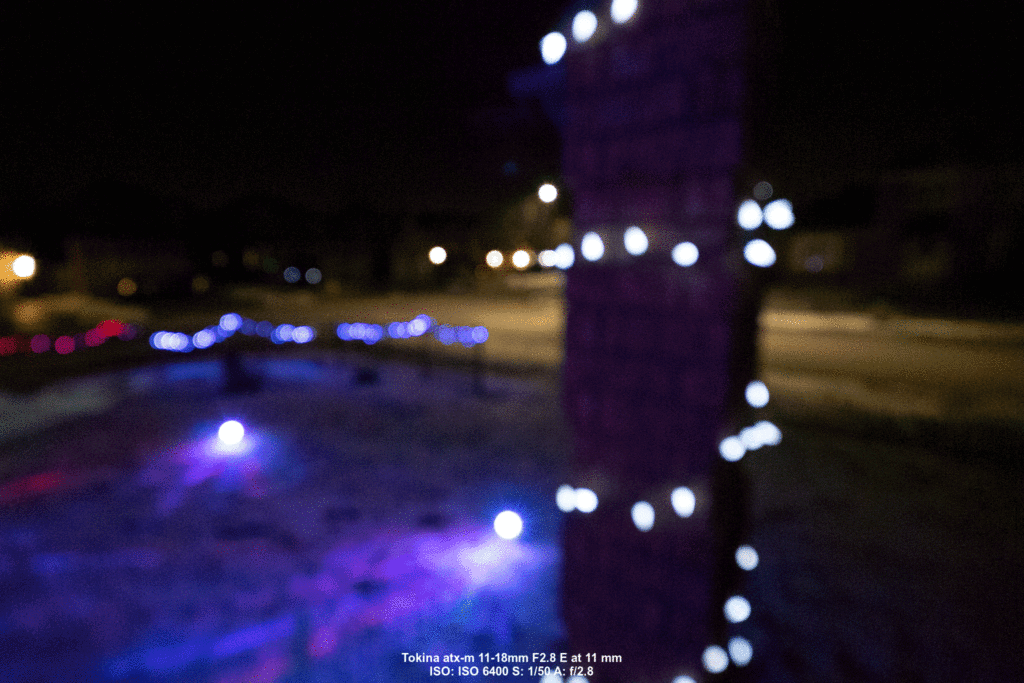
(Click to view larger image to see changes)
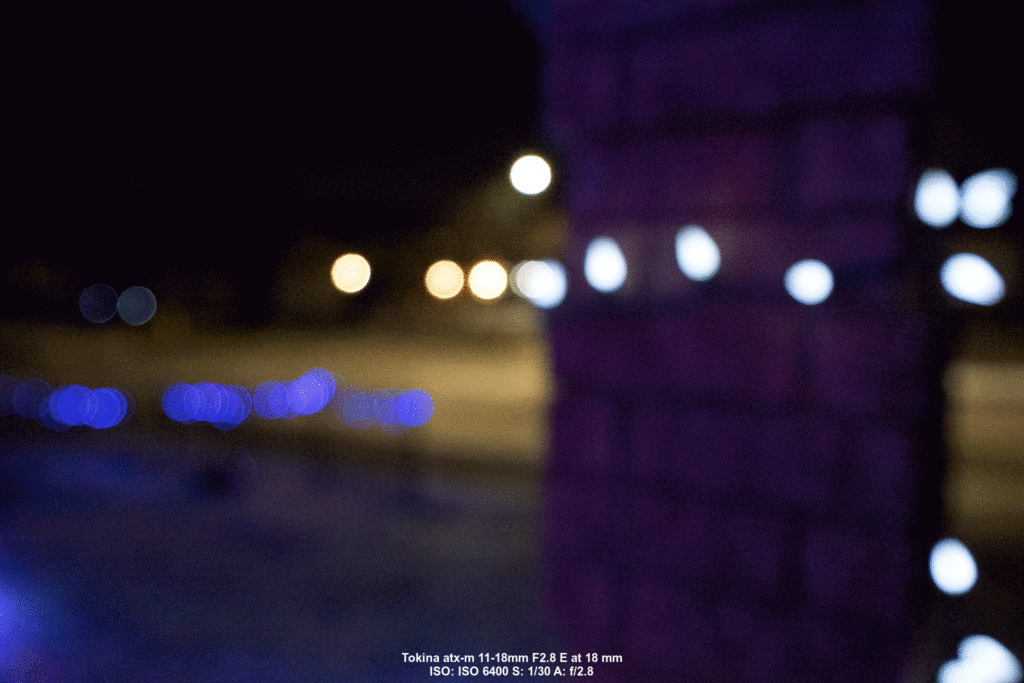
(Click to view larger image to see changes)
The only thing I was slightly disappointed in with the atx-m 11-18mm were the sun stars. The rounded 9 blade aperture created that beautiful round bokeh yet the sun is slightly blobby and sun stars aren’t as well pronounced as some other lenses I’ve tested. It’s a small quibble considering the overall performance of this lens.
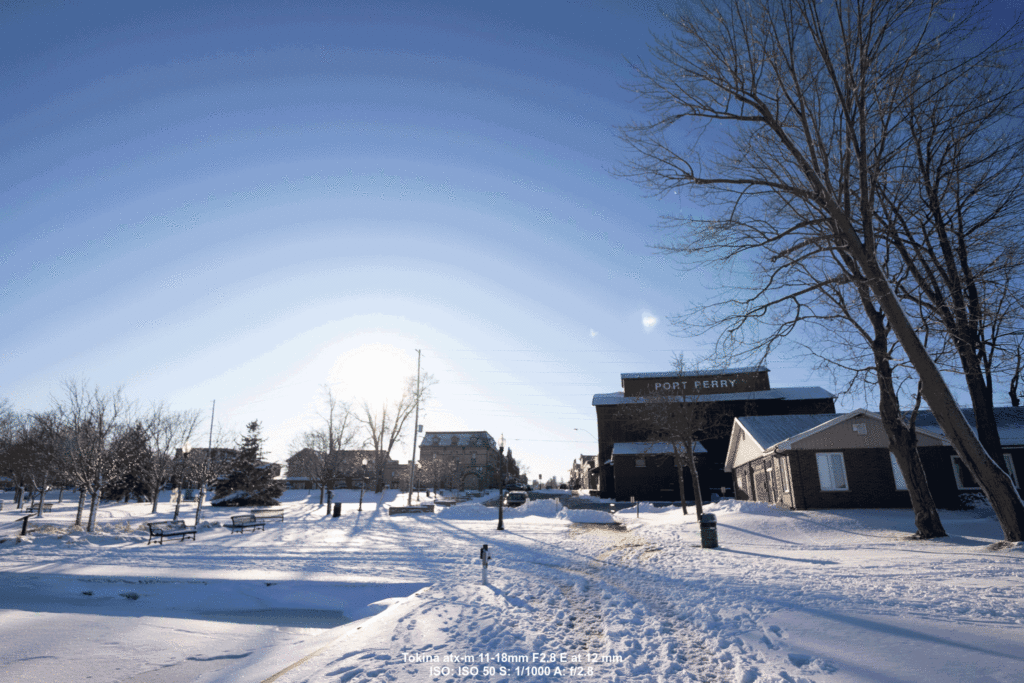
(Click to view larger image to see changes)
Conclusion
Quick and accurate autofocus, well-controlled distortion, vignetting, coma and chromatic aberrations and suitably sharp – the atx-m 11-18mm has pretty much everything I want in an ultrawide lens. I was happy with the bokeh yet unimpressed by the sun stars. The size and weight, and how well this lens balanced on my camera, plus the ability to use the multitude of 67mm filters I have, makes the atx-m 11-18mm a winner in my books. It should be welcome in any APS-C photographers camera bag.
About the Author – Will Prentice
A portrait, fine art and commercial photographer for 30 plus years, Will Prentice is not just a contributor to PHOTONews magazine, but also host of PHOTONewsTV, owner of Captura Photography+Imaging and Technical Support/Brand Manager for Amplis Foto, Canada’s largest distributor of photographic equipment.
Will teaches photographers of all skill levels how to improve their craft – from creative photo projects to picking the right gear for their needs to flattering lighting to getting the best expressions to creating final images for screen and print. His unique style of highly detailed images with perfect tonality, wide dynamic range and stunning colour is instantly recognizable. Commercial clients rely on Will’s creative eye and mastery of lighting.
When he’s not behind the camera or in front of a class, you’ll find Will outdoors in any weather – usually on one of his bikes or enjoying time with his grandchildren.



